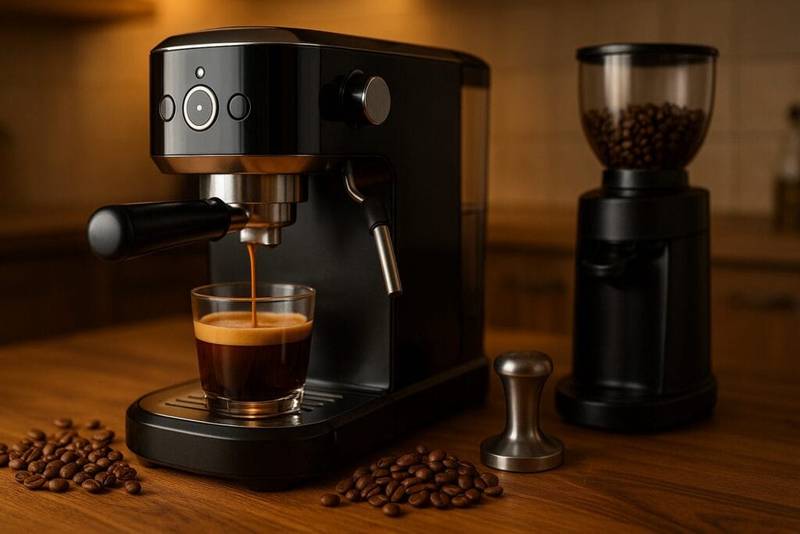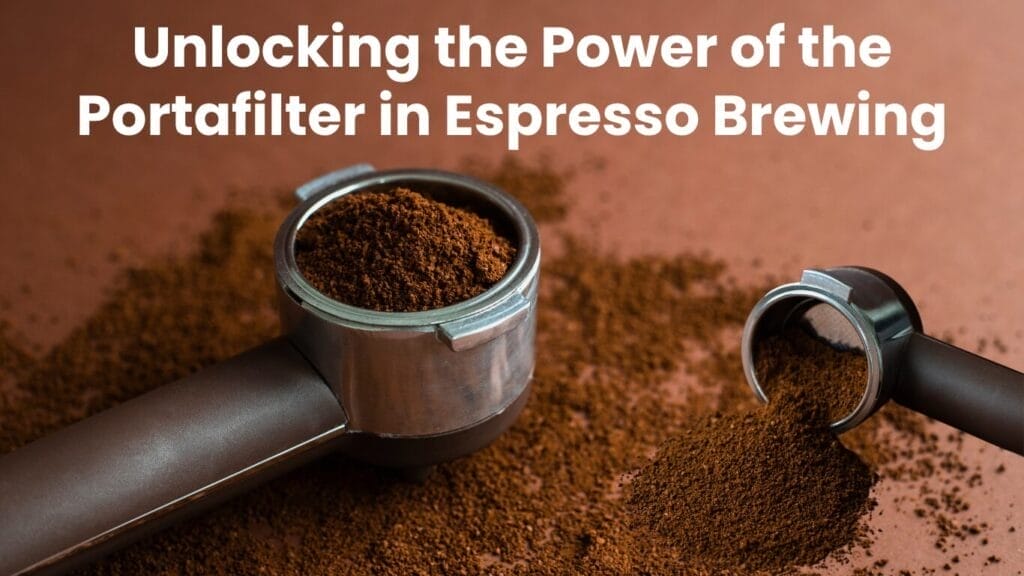What does 20 bar mean for espresso machines? If you’re shopping and learning how to use an espresso machine, you’ve likely seen specs like “20 bar pressure” in the product listings.
But what does 20 bar mean—and is it just a marketing buzzword? In the world of espresso, pressure plays a key role in extracting rich, bold flavor from your coffee grounds.
In this guide, we’ll break down what bar pressure is, whether 20 bars actually improves your espresso, and how much pressure you truly need for café-quality results at home.
Table of Contents
What does 20 bar mean for espresso machines? And Why It Matters
What does 20 bar mean for espresso machines? If you’re shopping for an espresso machine, you’ve likely seen specs like 15 bar or 20 bar pressure advertised front and center. But what exactly does “20 bar” mean—and more importantly, does it improve your coffee? Let’s dive into it.
To upgrade your home setup, explore our range of espresso machine accessories that help improve your coffee results—from tampers and grinders to descalers and milk frothers.
What Does “Bar” Mean?
“Bar” is a unit of pressure.
The air pressure at sea level is one bar, or roughly 14.5 psi. So, when a machine is said to have 20 bars of pressure, that means it can potentially deliver 20 times atmospheric pressure.
This pressure pushes hot water through finely ground coffee when creating espresso. The flavors, oils, and crema—the golden foam that a good shot of espresso is topped with—are extracted with the help of the proper amount of pressure.
What Happens at 20 Bar Pressure?

Although an espresso machine with a 20-bar pump can achieve high pressure, it does not necessarily require 20 bars during brewing.
Most machines only brew at around 8 to 10 bars—that’s the sweet spot for quality espresso. The 20-bar rating simply tells you the maximum pressure the pump can generate.
So why do manufacturers advertise it?
It’s often marketing. It sounds powerful, but in reality, what pressure for espresso is always better. What matters most is consistent brewing pressure, not the max rating. And if you’re planning to steam milk using an espresso machine, you don’t need 20 bars—just steady pressure and the right technique.
9 Bar vs 15 Bar vs 20 Bar: What’s the Difference?
- 9 Bar: Standard brewing pressure in most professional coffee shops.
- 15 Bar: Common in home machines—offers a little cushion to maintain a steady 9 bars.
- 20 Bar: Typically overkill; rarely used fully during brewing. Useful only if the machine is well-designed and controls pressure accurately.
Think of it like car speed. Just because your car goes up to 200 mph doesn’t mean you’re driving that fast every day. The same goes for espresso machines.
Does 20 Bar Pressure Matter for Home Brewing?
Not really. For most home users, a well-built 9–15 bar machine is more than enough. If a machine boasts 20 bars but can’t hold steady at 9 during brewing, it won’t make good espresso. Whether you’re pulling a basic shot or want to make a latte with an espresso machine, pressure consistency matters more than the max bar rating.
Here’s what matters more than max pressure:
- Consistent brewing pressure (ideally 9 bars)
- Stable water temperature
- Fresh, properly ground beans
- Quality portafilter and tamping
- Even if your goal is to make an Americano with an espresso machine, what you really need is stable 9-bar brewing, not just higher specs.
What Is Bar Pressure in an Espresso Machine?

Explore our coffee knowledge hub for everything from espresso basics to advanced brewing techniques.
Bar pressure measures the force that an espresso machine uses to pump hot water through ground coffee. In the espresso world, this pressure is crucial because it directly affects how well flavors, oils, and aromas are extracted from the coffee.
The word “bar” originates from the Greek word “baros,” which means weight. One bar equals the atmospheric pressure at sea level, or about 14.5 pounds per square inch (psi). So, when you see an espresso machine rated at 15 or 20 bars, it means it can generate up to 15 or 20 times the natural atmospheric pressure.
But here’s where it gets interesting: even though some machines advertise up to 20 bar pressure, the ideal brewing pressure for espresso is around 9 bars. This is the standard used in commercial coffee shops and by skilled baristas. It’s enough force to pull a rich, balanced shot without over-extracting or producing bitterness.
Most home espresso machines with 15–20 bar pumps use higher pressure as a buffer to ensure that at least 9 bars are consistently maintained during brewing. Think of the extra pressure as backup power—it’s there to help, but it’s not always fully used.
So, while bar pressure may sound like a technical detail, understanding it helps you:
- Choose affordable espresso machine
- Brew better-tasting espresso
- Avoid falling for marketing gimmicks
In short, bar pressure is one of the most important factors behind a great espresso shot, and knowing how it works gives you a real edge in your home brewing journey.
FAQS||What does 20 bar mean for espresso machines?
What does “20 bar” mean in an espresso machine?
“20 bar” refers to the amount of pressure the espresso machine pump can generate—20 times the atmospheric pressure at sea level.
Is 20 bar pressure good for making espresso?
Yes, but most espresso is extracted best at around 9 bars. While 20-bar machines offer more power, higher pressure doesn’t always mean better coffee.
What’s the difference between 15-bar and 20-bar espresso machines?
The difference lies in maximum pressure. Both can brew good espresso, but 15 bars is often sufficient—20 bars might be more about marketing.
Can too much bar pressure ruin espresso?
Yes, excessive pressure can lead to over-extraction, causing bitter flavors. Balanced pressure (8–10 bars during brewing) usually yields the best taste.
Do I need a 20-bar machine for home use?
Not necessarily. A machine with consistent 9–15 bar performance can produce excellent espresso. What matters more is build quality and temperature stability.
Final Verdict:
Although a 20-bar espresso maker may seem remarkable, better espresso isn’t usually the result of more pressure. The secret to creating a particularly rich, well-balanced espresso is to use about 9 bars.
Anything beyond that is often just marketing fluff—unless the machine uses that pressure efficiently and consistently. Instead of focusing solely on bar pressure, also consider whether you should use regular coffee in an espresso machine, as factors like grind size and roast level significantly impact the flavor.
A well-designed 15-bar machine that consistently delivers 9 bars during extraction will outperform a cheap 20-bar machine every time.







